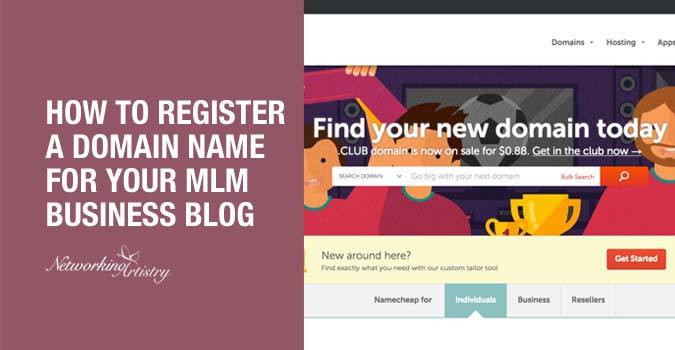If I were to ask who your perfect customer avatar was, would you be able to give me an answer? Would you even know what a customer avatar is? And no, it’s not those blue aliens from the movie. If you do know and have yours defined, good for you, you’re ahead of the pack!
Many marketers might say, “sure, I know exactly who my customer avatar is”, but in reality, those who “think” they know probably couldn’t describe him or her if you asked.
[thrive_2step id=’14270′]![]() [/thrive_2step]
[/thrive_2step]
Here’s why.
Yesmail Interactive and Gleanster, a leading analyst firm, conducted a research report on this topic. They surveyed 100 executive-level marketers.
According to their report, 80% said they relied primarily on using only their customer’s basic demographic profile and purchase history to guide their marketing campaigns.
Another statistic from that report stated that 62% didn’t even use the customer data provided to them from sources like social media. Customer data that could be used to better target their audience.
What’s interesting is that the executive-level marketers surveyed, came from businesses that generated $10 million to over $1 billion in revenue.
“Despite their assumptions, marketers really don’t know their customers. With four out of five relying on basic demographic and transactional data they perceive as sophisticated, we found that marketers continue to rely on legacy marketing tactics and struggle to incorporate critical cross-channel data to inform customer messaging and offers.” – Mike Fisher (president of Yesmail Interactive)
So, if the majority of big time executive marketers don’t even know who their ideal customer is, what does that say about the millions of regular business owners and marketers out there like you and me?
If those statistics hold true for the rest of us “small time” players, don’t you think it might be to your advantage to stand above the crowd and get going on creating your customer avatar?
I’m sure you’d agree. The big question now is… are you actually going to do this exercise? A lot of you probably won’t for the simple fact that it’s going to take some time, effort and thinking to complete.
Please don’t ever let that be a deciding factor on whether or not you’re going to succeed in your business.
If… oops, I mean WHEN you complete this exercise, just know you will be so much further ahead than most business owners and marketers that it’s not even funny.
That’s how important this is. Complete this exercise and you’re on your way to seeing massive growth and success in your business.
Still with me? Fantastic, let’s get started!
Target Market vs. Customer Avatar.
A lot of people get these two confused so I’ll try to explain the difference.
Target Market.
A target market is the breaking of a market into segments and then focusing your marketing efforts on that segment. This segment consists of the customers who are most likely to buy what you have to offer because it matches their needs and desires.
Hold on a minute, isn’t that the same thing as a customer avatar? Well yes, but I’ll get to that in a second.
Let’s take men’s sneakers for example. Obviously the market is for men but the men’s sneaker market is still broad.
It can be broken down into even more segments or niches, like basketball sneakers, or running sneakers and so on.
And even within those segments you will have sneakers targeted for teenagers, men in their 20’s, 30’s, 40’s and so on.
The thing is, teenagers might have a different perspective on things like fashion and style, than say guys in their 30’s. The same goes for guys in their 20’s compared to guys in their 40’s or 50’s etc.
Because of these differences, a marketing message that works incredibly well with the 40 year olds, may seem ridiculous to a teenager.
That’s why marketing campaigns need to be crafted to “speak” to each one of these demographics within that target market.
Now back to it sounding like a customer avatar. The difference is, with a target market, when a marketing message is crafted for the male teenage demographic, it’s targeted to the entire male teenage sneaker market. Make sense?
Customer Avatar.
A customer avatar on the other hand, gets much more specific than a target market. Yes, it shares a lot of similarities but now we begin to dig even deeper. Your customer avatar will be a fictional detailed representation of your one, ideal customer.
An example of a customer avatar would be a woman named Nancy who is 45 years old. She’s been married to Jim for 20 years and has 3 kids.
She works sales at a retail store and together with her husband make $65,000 a year. They’ve acquired a lot of debt over the years so they live paycheck to paycheck.
Nancy desperately wants to spend more time with her family but has to work double shifts just to help cover their high monthly expenses.
She joined a health and wellness home based business but doesn’t have a lot of time to find and meet with prospects.
So she decides to go online to find leads but doesn’t know how…
That was just a brief example of a customer avatar and it gets even deeper and more detailed than that.
In comparison, an example of a target market could be a group of women in their 30’s – 40’s who have a home based business on the side. They have children and varying professions and make between $50,000 – $75,000 a year.
See the difference? Much more broad and generic compared to the avatar. There is no “face” to them.
Why is Having a Customer Avatar so Important?
Well, because your avatar will dictate almost every aspect of your marketing, sales and prospecting. Every time you create content, it will be directed towards your avatar.
Content like your videos will be speaking directly to them. Every blog post you write will be written with your avatar in mind.
[bctt tweet=”A customer Avatar will impact virtually every aspect of your marketing, prospecting and sales process.” username=”netwrkingartist”]
For example, think of the lyrics for a favorite song. What is it about those lyrics that move you? Why does that song bring out emotions of happiness, sadness or anger? It’s because you can relate.
Have you ever been at a low point in your life and a song comes on the radio and it feels like the lyrics are talking about everything you’re going through at the moment?
Almost as if the songwriter wrote it just for you at this particular time of pain in your life?
When you define your ideal customer, it allows you to get a sense of what’s going on with them.
Knowing and understanding their pain points lets you craft your marketing message that is so targeted, it appeals to that specific person as opposed to a generic broad audience.
When done correctly, like your favorite song, your customer avatar will feel like you are personally talking to them and only them.
Things to Consider.
There’s a saying, “if you try to help everyone, you end up helping no one”.
Some of you may think that you don’t need a customer avatar because you believe your product or service can help everyone.
Unless you’re a true mass market business, like an automobile or telecom company, having a mass marketing mentality for your home or small business is a sure fire way to waste A LOT of money and time!
In addition, using a mass marketing strategy will find its way to your ideal customer, but guess who else you’ll be attracting? That’s right.
You’ll also be attracting an equal amount of the undesirable customers as well. I’ll get to them a little later.
Just know that by laser targeting your customer or prospect instead of going for anyone and everyone, you will be attracting more of the people you want, instead of the people you don’t want.
[bctt tweet=”If you try to help everyone, you end up helping no one.” username=”netwrkingartist”]
How to Define Your Ideal Customer Avatar.
Now the fun part! There seems to be two schools of thought about how detailed your customer avatar should be.
Some feel you don’t have to overthink it while others feel the more detailed the better.
The way I see it, the more detailed you go, the more real that person becomes to you. And the more real that person becomes, the more you’ll be able to connect and understand their pains.
The more you can understand their needs and wants, the more you can really “speak” to them in your content and marketing messages.
[thrive_2step id=’14270′]![]() [/thrive_2step]
[/thrive_2step]
Below is a list of questions with sample answers to help you out. Feel free to add more and make it as detailed as you want.
Demographics.
- What’s their name? – Nancy
- What is their gender? – Female
- How old are they? – 45 years old
- What’s their marital status? – Married
- Do they have children? – 3 kids
- What’s their highest level of education? – College
- What do they do for a living? – Nurse
- What’s their yearly salary? – $70,000
- Where do they live? – St. Paul, Minnesota
Appearance.
- What’s their hair color? – Brown
- What color are their eyes? – Brown
- How tall are they? – 5′ 3″
- How much do they weigh? – 150 lbs.
Psychology/Values.
- What are their pain points? – Lots of debt. Dislikes her job. Hardly sees her family.
- Where are they looking for solutions? – Online courses, mentorship.
- What are they passionate about? – Music, Reading, Wine.
- Phrases they respond to? – Create time and financial freedom. Spend more time with family.
- What’s important to them? – Retirement, kid’s education.
- What’s their Hopes/Desires? – Start a business, quit job, gain financial/time freedom, spend time with family.
Putting a Face to Your Avatar.
Here’s a fun little website that lets you create the face of your own avatar. It gives you the option to pick the gender, hair and eye color, face shape and a bunch of other features.
It’s free to use and you can download your creation. Print it out and use it to paste in your [thrive_2step id=’14270′]FREE downloadable Avatar worksheet.[/thrive_2step]
Creating Your Avatar’s Story.
Now that you have the details of your avatar down, the next step is to put everything together and write his or her story.
Here’s Casey, our avatar and an excerpt from her story:
Casey is a 45 year old Lab Technician and mother of two children. Casey and her husband Mark, a UPS delivery driver, both work full time and have a hard time balancing their jobs and raising their kids. Together they earn $70,000 a year.
Even though they bring in decent incomes, they spend a lot of money on things they really didn’t need and had incurred a lot of debt over the years. Because of their poor financial habits, they are always living paycheck to paycheck, barely able to make ends meet.
Casey is so stressed and frustrated with their situation that she secretly cries at night hoping for things to change. Yet her drive is so strong that she knows just wishing and hoping for things to get better are not the solution.
One day her co-worker introduces her to a business opportunity he’s currently involved with and Casey jumps at the chance and joins.
Casey is so pumped with excitement that she signs up her best friend and a few other people within a week. This is so easy she says to herself!
You can read the rest of her story in the [thrive_2step id=’14270′]FREE worksheet download.[/thrive_2step]
Advantages of Creating an Ideal Customer Avatar.
Having a custom avatar comes with many advantages.
- Your marketing becomes more fine tuned. Less money is wasted by targeting a narrower audience.
- You’ll be able to reach out and service a niche where you will be seen as an expert.
- It will help increase your conversion rates. By saying the right things in your marketing message, this will prompt some form of action on their part.
- You will get repeat sales because you understand their market. They will feel like you’re reading their mind by addressing their wants and needs.
- They’re the customers that will likely upgrade to your premium products and services.
- Your customer avatar will generate the largest proportions of your profits.
- They won’t complain or haggle about price because you’ve crafted your marketing message so well they’re ready to buy.
- They’re the customers that will give you the testimonials and awesome feedback that’s crucial to your business.
- Your avatar will make great team members in your Network Marketing business because they are “your type of person”.
- They will be the people motivated to help promote your brand and share what you have to offer with others .
Negative Customer Avatar.
You can’t have the Yin without the Yang, or the force without the dark side.
Just as you have an ideal customer or prospect, you’ll also have the type of person that you don’t want as a customer or prospect.
This individual is the negative avatar, anti-avatar, Exclusionary Persona or whatever you want to call them. This is the person you want to avoid joining your business or even buying from you.
They will want everything for free or haggle on price, yet demand the most from you. They’re the most taxing of your time and will be the ones that keep asking questions after questions without at least trying to find the answers for themselves.
They are the ones that will blame their lack of results on you, your company, your products, or whatever else they can find to place blame.
These are the types where you will become their babysitter. They will be a massive drain on you and your business. Does any of this sound familiar to you?
The good news is, defining your negative avatar is easier to come up with.
Just think of that person(s) who joined your team and was a complete nightmare to work with. Write down all the things that made working with that individual so difficult and unbearable. That’s your negative avatar.
You see, if you don’t put in the work to create your ideal customer, you will be attracting this type of person as well and you don’t need that for your business.
Multiple Avatars.
Having more than one avatar is perfectly fine. In fact, many businesses will have multiple avatars. Especially if you offer more than one product or service.
By creating multiple avatars, you can craft specific marketing messages to engage the different customers you’re looking to get into your business or buy your products.
If your marketing budget is tight, I would suggest first focusing on the one with the most potential to convert to leads and sales. Then when you see results, market to the next one.
Communicating With Your Avatar.
Now that you’ve identified your ideal customer, you will want to know how to talk to them. You will want to speak to them and say the kind of words they want to hear so they can relate to you. Where they feel you are speaking to them.
To do this, understanding the different personality types can be very useful. I’m not saying you have to get into psychology or anything like that, but even having a basic awareness and understanding can really come in handy. Especially when dealing with prospects.
Now, this is a big and complex topic and is a blog post (or two) in itself. There are also different ways to identify personality types like the Myers–Briggs Type Indicator (MBTI).
For the sake of this article, I will be talking about the four temperaments theory which suggest there are four fundamental personality types. They are the, Sanguines, Cholerics, Melancholics and Phlegmatics.
A good book to read that simplifies these four types and was written specifically for Network Marketers is, The Four Color Personalities For MLM by Tom “Big Al” Schreiter. Big Al uses colors to explain the four types.
Blue (Sanguine):
- Traits: optimistic, outgoing and social. Blues are the “super-extroverts” and love to talk and meet new people. They love to have fun, try new things and be the center of attention.
- Interest Words: Fun, exciting, new, travel, excellent.
Red (Choleric):
- Traits: strong-willed, forceful, decisive and active. Reds want to take charge and be the boss. They are organizers and like telling people what to do. They are all about the money.
- Interest Words: Money, wealth, results, leader, compete.
Green (Melancholic):
- Traits: analytical, perfectionist and quiet. Greens are your introverts and are usually the engineers, accountants, scientists, programmers, Vulcans, etc. They’re all about information, facts, and data. Think of Mr. Spock. =)
- Interest Words: Proof, statistics, studies, numbers, percentage, accurate.
Yellow (Phlegmatic):
- Traits: relaxed, timid and peaceful. This type loves to help people. They will do more for others than they will for themselves and everyone gets along this personality type.
- Interest Words: Help, contribute, assist, nurture, comfort, care, share.
Now please keep in mind the above examples are very general and exaggerated descriptions. I just wanted you to get a basic picture of the four personality types and examples of interest words to use, that will “reel” them in.
Also keep in mind that most people, including your ideal customer will have a blend of a dominant and secondary type. Some can even be a blend of three types. That’s why it’s important that your marketing message speaks to all four types.
A good exercise to try is, next time you see a marketing ad or sales page, see if you can pick out the interest words for each personality type.
When it comes to speaking with prospects, the better you get at identifying these core personalities, the better you will get at tailoring your presentation strategy to capture their interests and meet their needs.
If you’d like to dig deeper into personality types, here’s a couple more good books that we’ve read and recommend.
- Personalities Plus by Florence Littauer
- The Art of Dealing with People by Les Giblin
[thrive_2step id=’14270′]![]() [/thrive_2step]
[/thrive_2step]
Wrapping It Up.
By now you should have a pretty good idea why defining your ideal avatar is so important. Knowing your avatar will help guide your decisions for many aspects of your business.
But there’s one last thing to consider. Once you finish defining your ideal customer, it doesn’t just end there. As your products or services help solve their existing pain points, new ones will certainly arise as they reach the next level. What will those look like? Think about what these future needs will be and what solutions you can provide to meet them.
Remember, because your content and messages will resonate so much with them, they will have developed a “know, like and trust” factor with you.
Make it your goal to be there to guide them, to continually provide value, and to help them achieve the level of success they desire. In turn, their success is your success!
If you found value in this article, we would appreciate it if you could leave a comment and share with others that can use this information.
- Stand Out! A Guide to Creating a Unique Personal Brand Identity. - December 24, 2016
- How to Brand Yourself to Stand Out in an Overcrowded Market. - December 19, 2016
- What’s a Personal Brand and Why You Need One for Your Business. - December 12, 2016








